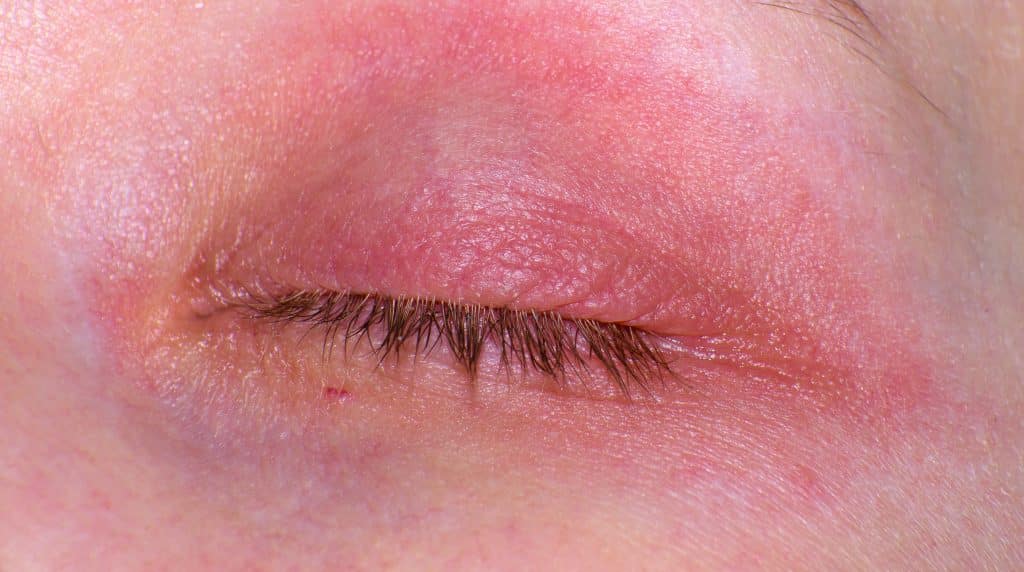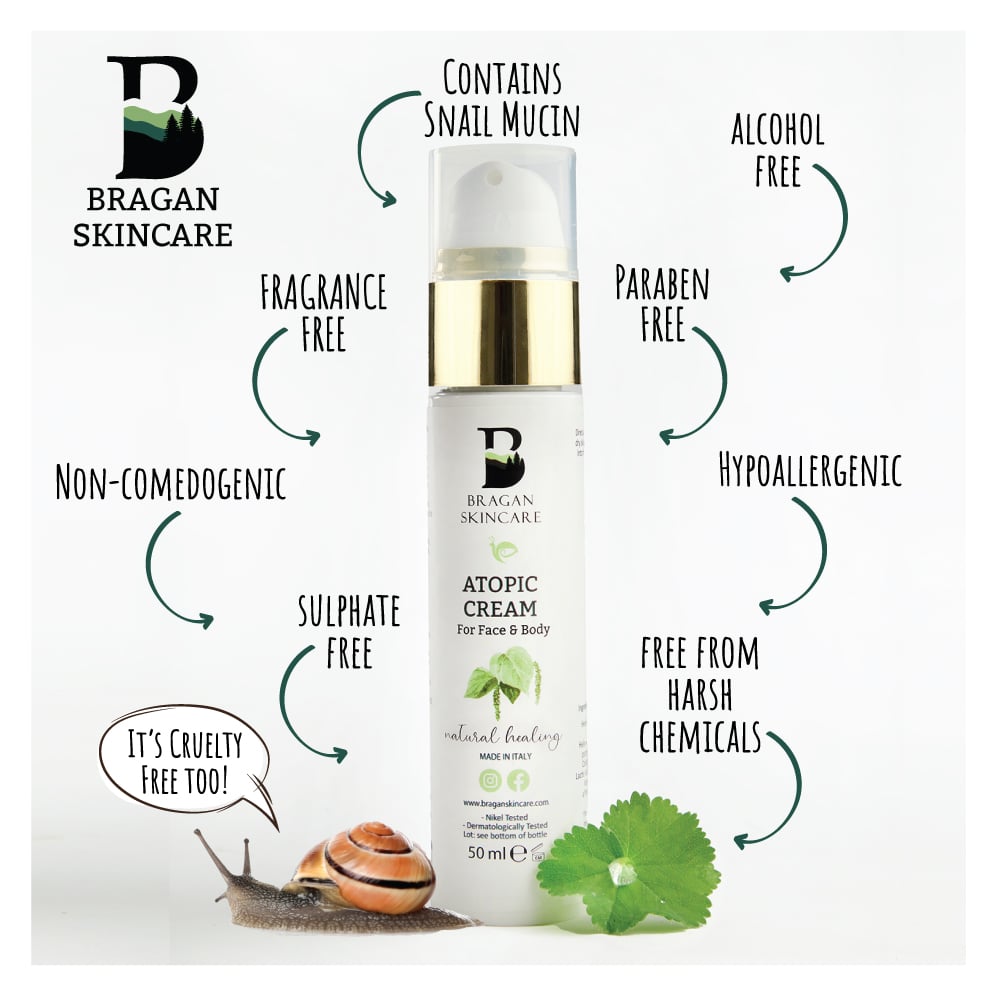Eyelid Dermatitis Explained
What is Eyelid Dermatitis?
Eyelid dermatitis is a form of inflammation that affects the thin, delicate skin of the eyelids. It manifests as redness, itching, scaling, and swelling of the upper and lower eyelids. This condition falls under the broader category of eczema, and it can be acute or chronic depending on its triggers and the patient’s immune response. The skin around the eyes is particularly vulnerable due to its fragility, low lipid content, and frequent exposure to potential allergens or irritants.

How It Differs from Other Forms of Dermatitis
Unlike other areas of the body, the eyelids are more susceptible to irritation from even low concentrations of allergens or chemicals. The skin barrier here is less robust, meaning substances can penetrate more easily. Additionally, the close proximity to the eyes means that even mild inflammation can lead to significant discomfort and visual distraction.
The Sensitive Structure of Eyelid Skin
Eyelid skin is among the thinnest on the human body—approximately 0.5 mm thick. It has fewer oil glands, making it prone to dryness and irritation. This anatomical reality makes it particularly important to treat eyelid dermatitis with non-aggressive, hydrating, and hypoallergenic solutions.
Causes of Eyelid Dermatitis
Irritant Contact Dermatitis
This occurs when a substance physically damages the skin barrier. Examples include harsh soaps, overuse of exfoliants, or residues from shampoos and cleansers that run onto the eyelids. The reaction is non-immunological and often dose-dependent—meaning the more contact with the irritant, the more severe the reaction.
Allergic Contact Dermatitis
In contrast, allergic contact dermatitis results from an immune reaction to a substance previously encountered. Common culprits include nickel (found in eyelash curlers or spectacle frames), preservatives in cosmetics, and fragrances. Once sensitised, even small amounts of the allergen can provoke a flare-up.
Atopic Dermatitis (Eczema)
Those with a history of atopic dermatitis are at increased risk. Their skin barrier is inherently compromised, allowing irritants and allergens to trigger inflammation more easily. Eyelid involvement is particularly common in adults with facial or neck eczema.
Underlying Conditions and Skin Barrier Dysfunction
Skin conditions such as seborrheic dermatitis, rosacea, or blepharitis can exacerbate or mimic eyelid dermatitis. A weakened skin barrier—whether from genetics, environment, or lifestyle—remains a key contributor.
Who is Most Affected?
Women and Cosmetic Use
Women tend to be more affected due to higher use of cosmetic and skincare products around the eyes. Mascara, eyeliner, eyeshadow, and makeup removers often contain allergens or irritants.
People with Existing Skin Conditions
Those with atopic eczema, psoriasis, or rosacea are more prone to eyelid dermatitis due to ongoing inflammation and skin sensitivity.
Individuals with Allergies or Sensitivities
People with hay fever, pet allergies, or known sensitivities to common allergens (like dust mites or pollen) may experience cross-reactivity, especially during allergy season, worsening eyelid symptoms.
Common Triggers of Eyelid Dermatitis
Ingredients in Skincare and Makeup
Parabens, propylene glycol, and lanolin are frequent offenders. Even “natural” products containing essential oils or plant extracts can trigger reactions.
Fragrances and Preservatives
Fragrance mixes and preservatives like methylisothiazolinone are some of the most allergenic substances in cosmetics. They’re often hidden in eye creams, facial wipes, and cleansers.
Environmental Factors
Pollen, dust, smoke, and extreme temperatures can compromise the skin barrier and trigger flare-ups. Urban environments with high pollution levels can exacerbate the issue.
Metal Allergies (Nickel, Cobalt)
Nickel-containing eyelash curlers or glasses frames can cause chronic irritation when in prolonged contact with eyelid skin.
Rubbing or Scratching the Eyes
Mechanical damage from rubbing not only worsens inflammation but also further compromises the skin barrier, making it more susceptible to allergens and irritants.
Signs and Symptoms
Redness, Swelling, and Itching
The hallmark symptoms include noticeable redness, a burning sensation, and an uncontrollable itch that often leads to rubbing—worsening the condition.
Flaking and Scaling
Dry, flaky patches around the eyes are common. In chronic cases, the skin may appear rough or leathery.
Thickened or Leathery Skin
Repeated inflammation leads to lichenification—thickening of the skin from chronic scratching or rubbing.
Diagnosis and Testing
Clinical Evaluation by a Dermatologist
A thorough history and visual inspection usually suffice, but persistent or unclear cases may need further testing.
Patch Testing for Allergens
Patch testing is the most reliable method for identifying contact allergens. It involves applying standard allergens to the skin and evaluating the reaction over a few days.
Ruling Out Other Conditions
Differentiating eyelid dermatitis from conditions like blepharitis, perioral dermatitis, or even fungal infections is crucial for targeted treatment.
Eyelid Dermatitis and Quality of Life
Physical Discomfort
Chronic itch, swelling, and pain can make daily life uncomfortable, especially in tasks requiring concentration or exposure to light.
Psychological Impact
Visible skin conditions can lower self-esteem and increase stress—factors that can, ironically, worsen eczema.
Social Implications
Persistent redness and scaling around the eyes can impact personal and professional interactions.
Treatment Approaches
Avoidance of Triggers
Identifying and eliminating the trigger is the most effective long-term strategy. This often requires lifestyle changes, such as switching to hypoallergenic products or avoiding certain jewellery.
Use of Mild, Fragrance-Free Products
Emollients and cleansers specifically designed for sensitive skin should replace regular skincare items.
Corticosteroids – A Double-Edged Sword
While effective for reducing inflammation, topical steroids should be used with caution near the eyes due to the risk of thinning skin, increased intraocular pressure, and dependency.
The Need for a Gentler Alternative
Steroid-free, non-irritating treatments that restore the skin barrier and calm inflammation are essential—especially for chronic cases.
Why Bragan Skincare’s Atopic Cream is the Ideal Treatment
Powered by Snail Mucin – A Natural Skin Soother

Snail mucin is rich in glycoproteins, hyaluronic acid, and zinc—all of which support skin regeneration and hydration. It has natural anti-inflammatory and antimicrobial properties, making it ideal for sensitive, inflamed eyelid skin.
Fragrance-Free, Steroid-Free, and Dermatologist Approved
Bragan’s Atopic Cream avoids all known irritants and allergens, offering a safe, effective alternative for long-term use. It is especially suitable for eyelids, where thin skin demands a delicate balance of care and effectiveness.
Restores the Skin Barrier and Reduces Inflammation
Formulated to mimic the skin’s natural lipid profile, this cream supports barrier repair while actively calming irritation.
Suitable for Sensitive Areas Like Eyelids
Lightweight, fast-absorbing, and non-comedogenic, Bragan’s Atopic Cream can be safely used around the eyes without fear of burning or stinging.
Backed by Science, Loved by Customers
Customer testimonials consistently report reduced redness, fewer flare-ups, and softer, more resilient skin within just a few days of use.
Real-World Results and User Testimonials
Many users suffering from chronic eyelid dermatitis have shared positive experiences after switching to Bragan’s Atopic Cream. They report not only symptom relief but also improved skin texture and confidence. Importantly, no adverse effects—such as stinging or worsening inflammation—have been observed, even with daily use.
Preventive Tips for Managing Eyelid Dermatitis
Patch Test All New Products
Even hypoallergenic formulas can cause reactions. Always test new products behind the ear or on the wrist before applying them to the eyelids.
Stick to Hypoallergenic Routines
Use minimal, fragrance-free skincare and makeup. Avoid products with a long list of ingredients.
Maintain Hydration and Skin Barrier Health
Regular use of a barrier-repairing moisturiser like Bragan’s Atopic Cream can help prevent flare-ups and support long-term skin health.
When to Seek Professional Help
If symptoms persist despite avoidance and skincare changes, or if eyelid swelling becomes severe, consult a dermatologist. You may require patch testing or prescription treatment to get things under control.
Atopic Cream for Sensitive Skin
Our atopic cream is designed to treat skin conditions. These may be inherited or as a result of sensitivity to allergens such as soaps, detergents, stress and the weather. Made from snail mucin – a natural ingredient with a wealth of healing, hydrating, and anti-inflammatory properties. Our Atopic Cream is dermatologically tested and effective in treating chronic skin conditions including eczema, psoriasis, and dermatitis. It brings relief to those suffering from irritated or itchy skin, rashes and allergic reactions. Snail mucin also reduces scar tissue and stretch marks and is soothing for dry and sensitive skin. Incorporate snail mucin cream into your skincare routine to remove the itch and soothe your skin.
Warning: This product contains snail mucin. Snails are molluscs and are classified as marine animals. Individuals with shellfish allergies should avoid using this product.
Stock up and Save. Purchase a larger size, multipack, or add multiple products to your shopping basket to benefit from bigger discounts. Each additional item added to your basket will also generate savings.
Conclusion
Eyelid dermatitis is a challenging but manageable condition when approached with a clear understanding of its causes, triggers, and treatment options. While traditional treatments like corticosteroids offer short-term relief, they come with risks—especially when used near the eyes.
Bragan Skincare’s Atopic Cream presents a compelling alternative. With its snail mucin base, fragrance-free formula, and gentle action, it is perfectly suited for the sensitive eyelid area. Whether you’re dealing with allergic, irritant, or atopic causes, this cream helps rebuild the skin barrier, soothe inflammation, and restore comfort—naturally and safely.
FAQs
1. Can eyelid dermatitis go away on its own?
Sometimes, if the irritant or allergen is removed. However, most cases benefit from topical treatment to speed recovery and prevent recurrence.
2. Is it safe to use moisturiser on eyelid dermatitis?
Yes, but only if the moisturiser is specifically designed for sensitive skin, free of fragrance, alcohol, and common allergens—like Bragan’s Atopic Cream.
3. How fast does Bragan Skincare’s Atopic Cream work?
Many users report visible improvement in 2–4 days, with significant relief from itching and redness.
4. Can I wear makeup with eyelid dermatitis?
It’s best to avoid makeup during flare-ups. Once symptoms are under control, stick to hypoallergenic products and always patch test first.
5. Is eyelid dermatitis contagious?
No. It is not caused by bacteria or viruses and cannot be passed from person to person.
Featured Bragan Skincare Products
-
€39.99 – €100.00Price range: €39.99 through €100.00Select options This product has multiple variants. The options may be chosen on the product page
-
€100.00Select options This product has multiple variants. The options may be chosen on the product page


